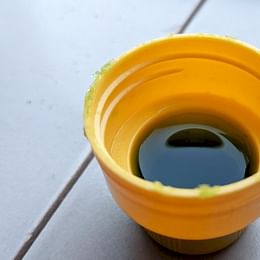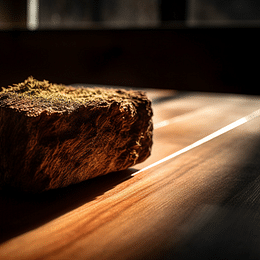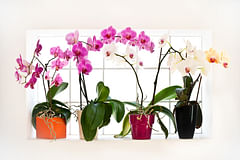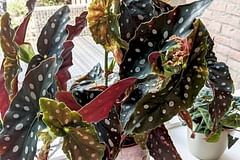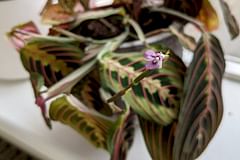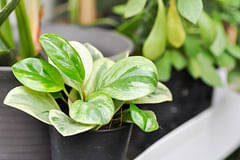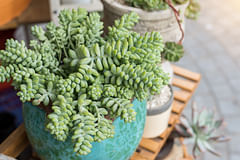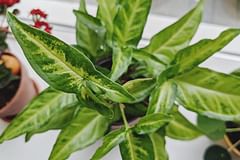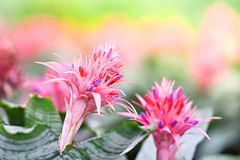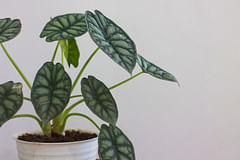How to care for a Zebra Plant (Aphelandra squarrosa)
Learn how to take care of your Aphelandra squarrosa plant, also called the zebra plant, which is an excellent pet-friendly houseplant from the jungle. This guide walks you through everything from watering to sunlight exposure and propagation!
Last updated on:
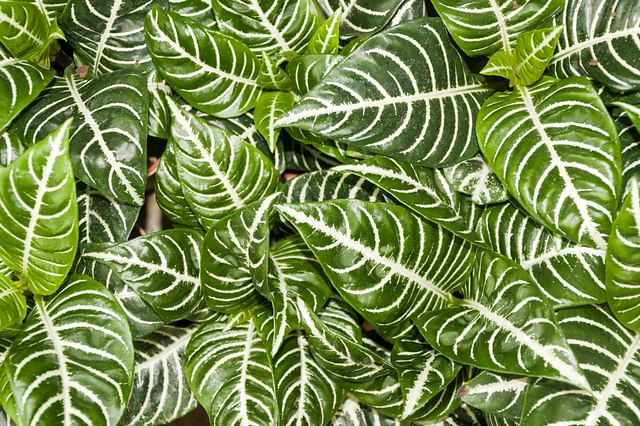
Are you looking for a plant with sharp zebra-like patterns or simply a plant that grows beautiful flowers? Look no further than the Zebra plant, also known as the Aphelandra Squarrosa!
These beautiful plants are easy to care for and can thrive in a variety of settings. In this plant care guide, I'll cover everything you need to know about how to care for your zebra plant. These are the topics we're going to look at together:
Let's get started with this plant care guide and learn how to take care of the Zebra plant in our house!
How often should I water my Zebra Plant?
Zebra plants are native to the tropical rainforests of Brazil, which gives us fantastic clues about the type of care this plant needs. When it comes to watering, it's quite an easy plant!
Your Zebra Plant should be watered about once a week, or when the soil is dry to the touch. Allow the water to completely soak through the soil and drain out the bottom of the pot. If you're unsure if the Zebra Plant needs more water, there's an easy way to check. Touch the top 1-2 inches of soil, and if the soil is moist there's no need to add water.
If the soil is dry, water your Zebra Plant until the water completely drains out of the pot. After you've watered your Zebra plant, allow the excess moisture to drain from the pot for about 5 minutes. Soil should now only hold the moisture that your plant needs and any excess moisture will have drained from the pot.
How much sun should my Zebra Plant get?
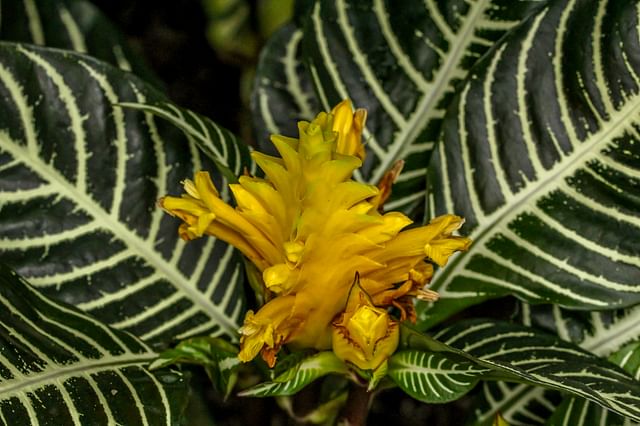
The zebra plant naturally grows under canopy trees, in warm and humid environments. Given its natural environment, your Zebra Plant will prefer bright, indirect sunlight. It will tolerate some direct sun, but not for too long as too much direct sun can scorch the leaves. If the leaves start to turn yellow or brown, I recommend moving the Zebra Plant to an area with more shade.
The perfect spot for your Zebra plant in your house is in a room with a west- or south-facing window. These rooms get the brightest light during the day, which is a great spot for this plant. Again, make sure this plant isn't getting any direct sunlight by placing it behind a thin curtain or another shaded spot.
What kind of soil should I use for my Zebra Plant?
The ideal soil for a Zebra Plant should be light and well-draining. but also hold onto water for a few days. You can find pre-mixed bags of soil in your local gardening stores. You can also make your own soil to ensure it will be well-draining and retain enough moisture. To make your own soil, I recommend adding 1 part potting soil, 1 part peat moss, and 1 part perlite. These ingredients help the soil to be well-draining for your houseplants, but will also drain any excess moisture to the bottom of the pot quickly. This will provide the best environment for your Zebra Plant.
The well-draining soil is very important for the Zebra plant because it's quite sensitive to overwatering. The light soil should hold onto some moisture to keep the plant hydrated, but drain the rest of the moisture. This will prevent overwatering and keep your plant happy.
What kind of fertilizer should I use for my Zebra Plant?
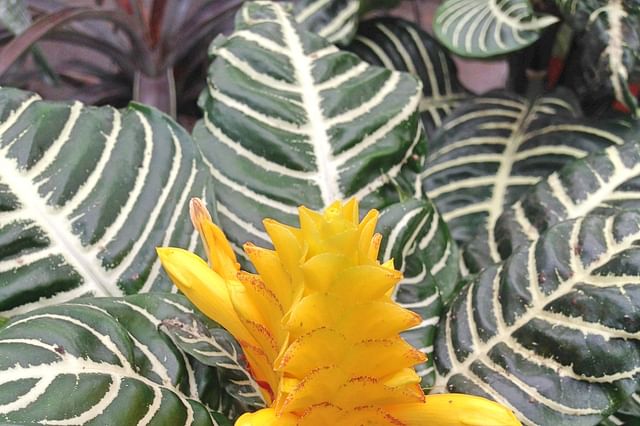
Fertilizing your plant is necessary to keep it healthy during the growing season, the spring and summer. When you're fertilizing your plant, you're giving it enough nutrients to grow, but also recover from pests. Like most other plants, the Zebra plant also needs to be fertilized regularly.
Fertilize your Zebra Plant every month during the growing season with a general houseplant fertilizer. My favorite type of fertilizer to use for my houseplants is a liquid fertilizer: fertilizer that you add to the water you're using to water your plants. It's convenient since you're already watering your plant, but it's also a precaution. If you use fertilizer sticks/spikes or any other slow-release fertilizer, you can't control the dosage. In rare cases, this can lead to overfertilizing your plant, which can damage your plants' roots and kill them. By adding liquid fertilizer to the water, you can make it stronger or more diluted as you see fit.
How often do I need to repot my Zebra Plant?
Your Zebra Plant will need to be repotted every two to three years. I recommend that you repot if the roots begin to rot or the plant becomes too big for its pot, causing the roots to become pot-bound or rootbound. When repotting, be sure to use a well-draining potting mix.
Remove the plant from its current pot and loosen the soil around the root ball. Place the plant in the new pot and fill in around the roots with the potting mix. Tamp down lightly so that the soil is firm, but not packed too tightly. Water thoroughly to help settle the soil and then continue to water as needed based on your climate and the plant's needs.
You may experience that your plant needs time to settle in its new pot. This looks like stunted growth or drooping leaves. Don't panic and don't change your plant care routine! The plant will need some time to adjust to its new growing environment and any additional change could make the recovery take longer or even kill the plant in the worst case.
Is a Zebra plant safe for pets?
Yes, Zebra Plants are safe for both dogs and cats. The ASPCA (American Society for the Prevention of Cruelty to Animals) has listed the Zebra Plant as non-toxic to both dogs and cats. This makes the Zebra plant one of the most exotic houseplants that are completely safe for your cats and dogs! You can bring the jungle indoors without worrying about having your pets around your Zebra plant.
What kind of pests do Zebra Plants suffer from?
Zebra plants, like many other tropical plants, are attractive plants for pests. Tropical plants often store a lot of moisture, which is a goldmine for many pests. Zebra Plants can suffer from mealybugs, aphids, and spider mites. If your Zebra Plant is being bothered by pests, there are a few things you can do to get rid of them. You can try using a strong stream of water from your faucet to dislodge them or use a pesticide made specifically for houseplants. I recommend using a natural pesticide, neem oil, or insecticidal soap. Be sure to read the instructions on the package carefully, and always use caution when handling pesticides. When you notice any pests on your houseplant, try to isolate your plant from the other plants to prevent the pests from spreading.
How can you propagate a Zebra plant?
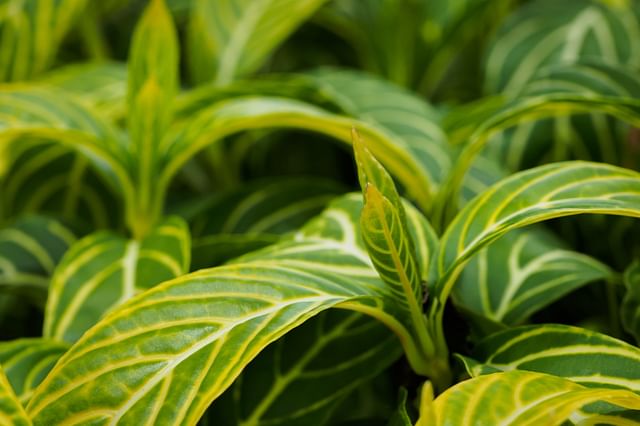
If you've found a Zebra plant and you want to propagate it to get more of them, there are a few ways to go about this. You can propagate a Zebra plant through air layering or stem cuttings.
When you choose to take cuttings, you should plant them in a mix of perlite and peat moss. This makes sure your cutting stays moist for longer. If you can, cover the cutting to trap the humidity around the cutting and place it in an area with bright, but indirect sunlight.
Another way to propagate your Zebra plant is to do air layering. Air layering is a more advanced way to propagate your plant and can take some practice. Essentially, you need to find a healthy stem and remove some of the leaves from that stem. The leaves use nutrients, but you need to preserve nutrients to grow roots. Make a small cut halfway into this healthy stem and place something in the cut to keep it open. A toothpick is a very popular way to keep this cut open. Then add some growth hormone to the cut and wrap the cut with moist sphagnum moss and wrap everything with plastic wrap. The plastic traps the moisture around the cut and this will slowly start to grow roots out of the cut in the stem. Once you see roots grow from the cut, you can cut the stem off and plant it in a new pot.
Conclusion
Zebra plants are beautiful tropical plants that will make a great addition to any home! They're not the easiest plant to take care of, but by following the tips in this plant care guide, it'll be a lot easier. The Zebra plant prefers a bright indirect spot in your house. It loves moist, but not wet soil, and it is quite easy to propagate! The best part? It's completely safe to have around your pets! With proper care, it will thrive and bring some tropical flair to your home!
If you found this plant care guide useful, please share it with your friends, family, or co-workers to help them take care of their plants as well!
Thank you for reading this post! I hope it helps you to keep your plants healthy and beautiful! If you're looking for more guides on specific plants, you can always request a plant guide to get a guide for the plant you have trouble with.
Tags: Plant care tips, flowers, pet-friendly, tropical
Posted on: Oct 22, 2022